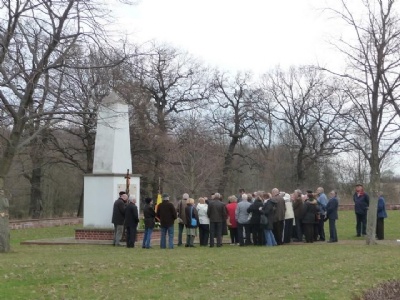Ohrdruf
In November 1944, a satellite camp subordinated to Buchenwald was set up in Ohrdruf about fourty kilometres southwest of Weimar. The camp was called Aussenkommando Ohrdruf S III and the prisoners were forced to work with an extensive tunnel complex that was supposed to become a Wehrmacht headquarters. But the tunnels were never completed or never used by the Wehrmacht, and historians are still discussing the actual purpose of the construction. It was mainly Jews who had been evacuated from the east who were imprisoned, but also Polish and soviet prisoners of war. In March 1945, the SS began evacuating the camp’s nearly 12,000 prisoners and the camp was liberated by the americans on April 5, 1945. During the camp’s existence, about 4,000 prisoners died.
When the Americans liberated the camp, they were met with corpses scattered throughout the camp, some corpses had the SS tried to cremate in open fires. Ohrdruf was not the first camp to be liberated, but it was the first camp that the western allies were confronted with the cruelty of the Nazi camps. The camp was visited by the western Allied commander, Dwight D. Eisenhower, american generals George S. Patton and Omar N. Bradley and a British parliamentary delegation who wanted to witness the horrors with their own eyes. Several of the macabre photographs taken in the camp were then spread across the world. After the war, the camp was destroyed.
Current status: Demolished with monument (2011).
Location: 50°51'51.81"N 10°44'59.98"E
Get there: Car.
Follow up in books: Kogon, Eugen: The Theory and Practice of Hell: The German Concentration Camps and the System Behind Them (2006).

After the war, the former camp was taken over by the Soviet Red Army but since 1993 the area belongs to the German Bundeswehr. The monument and what remains of the tunnel complexes are within military territory and may not be entered without permission from the Bundeswehr. During my visit I had no permit and couldn’t enter the area. I hope therefore that I, at some point, can go back to Ohrdruf.